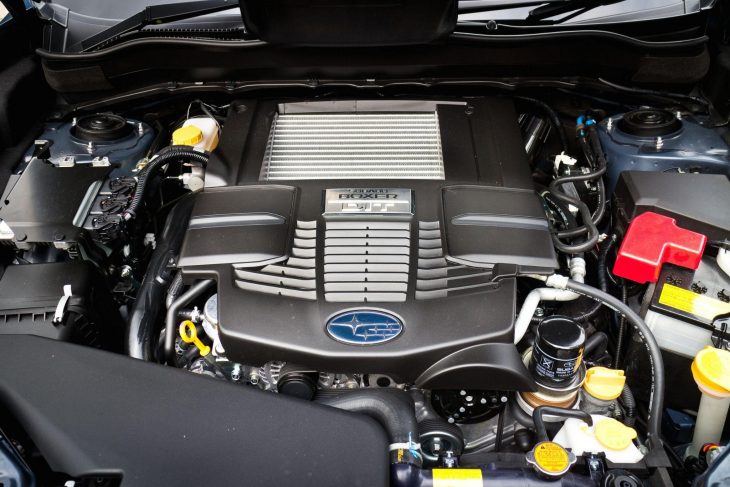The Subaru boxer engine has four cylinders with two on each side that are horizontally opposed. The Subaru engine produces good power, is reliable, and is easy to maintain. It also gets excellent fuel economy.
Karl Benz invented the boxer engine long before Subaru incorporated it into its Subaru 1000 model in 1966. The Subaru 1000 and its 1-liter engine was the world’s first production model to use the boxer motor design. It produced 55 horsepower and excellent fuel economy.
Current Subaru engines are more than twice the size of the original 1-liter motor. Subaru produces 2.4-liter and 2.5-liter engines that are naturally aspirated and have four valves per cylinder.
The 2.5-liter motor gives you up to 182 horsepower and 176 pound-feet of torque. It also is rated at 33 mpg on the highway and 26 mpg in the city. The Subaru WRX uses a turbocharged version of the 2.5-liter motor that generates up to 310 horsepower and 290 pound-feet of torque.
Advantages of the Boxer Engine
Subaru has used the flat-four boxer engine for nearly six decades with good success. The horizontally opposed cylinders in the Subaru engine provide many significant advantages. They help to give Subaru models a low center of gravity. The result is a lighter and lower engine that stays relatively cool.
Other advantages of horizontally opposed Subaru engines include:
- More efficient distribution of oil and other engine fluids.
- Reduced vibration, which lessens engine wear and tear.
- Better handling due to the lower center of gravity.
Subaru uses an all-wheel-drive (AWD) transmission with its boxer motor to help owners get excellent traction and handling. Virtually all Subaru models are AWD and handle well in rainy and snowy weather. You get a smooth ride with reduced engine noise and vibration from a motor that gives you excellent performance.
The Subaru engine’s low center of gravity helps to make it safer for passengers in the cabin. You might be in a head-on collision, strike another vehicle in the rear end, or drive into an object, the engine is more likely to go beneath the passenger cabin instead of entering it.
Continual Improvements to Subaru Engines
Subaru’s current boxer engine is a version of the long-running Subaru EJ series that the automaker first used in 1971. The early engines featured a single overhead cam and later included dual overhead cams for improved performance in a 1.5-liter motor.
Displacement grew to 2.0 liters and remained in production from 1988 until Subaru ceased offering the reliable motor after the 2020 production year. The 2.0-liter engine was rated for 200,000 miles and often reached that number with relatively low maintenance costs.
Subaru’s current 2.5-liter motor first appeared in 1996 and added an optional turbocharger in 2005. It is the most potent of the bunch and helps to keep the Subaru boxer engine highly relevant as the auto industry attempts to change over to electric motors.
The boxer engine continues to produce good power and provide owners with excellent fuel economy. Despite AWD sending power to all four wheels, the Subaru engine generally gets better fuel economy than many competing brands and models that are equipped with front-wheel drive.
Aside from a timing belt that Subaru suggests owners change every 60,000 miles, there are no major maintenance issues with the proven boxer motor. As long as you take care of them, Subaru engines are capable of taking care of your transportation needs for hundreds of thousands of miles.









